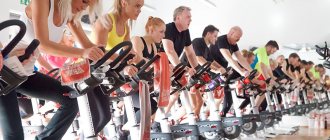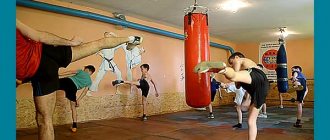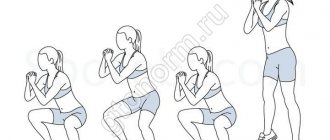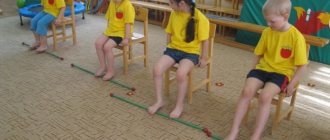A fight in the ring according to the rules of classic boxing requires good physical preparation. You don't have time to catch your breath. There is no way to lower your hands, shake yourself, or wipe the blood or sweat from your face. You need to have an excellent sense of your body, know your weak points and see the weak points of your opponent.
Boxing is the loneliest sport, the most mentally and physically difficult. Your body is being abused. It's not like running a distance, swimming in a pool, or throwing a ball into a basket. You must always be 100% ready.
Emanuel Steward, professional boxing coach and boxing commentator
The main qualities that a fighter needs are explosive strength and anaerobic endurance. Strength is needed to strike quickly and powerfully. Anaerobic endurance is necessary to avoid enemy blows and deliver your own. A boxer's training is based on these two factors.
If you don't practice martial arts yourself, training on bags and shadow boxing is unlikely to be useful to you. At the same time, a number of exercises that boxers love and practice are sure to fit into your workout and help you get in shape.
Strength exercises for boxing
Exercises for deltoids (shoulders):
1) Seated barbell or dumbbell press
2) Swing dumbbells to the sides
3) Seated barbell chest press
4) Stretching the gymnastic bandage to the sides
5) Stretching the bandage to the sides by stepping on it with one or two feet
Exercises for arm extensors:
1) Dips
2) Close grip press
3) French press (sitting, lying, standing)
Chest exercises:
1) Bench press
2) Push-ups
3) Lifting dumbbells to the sides
Back exercises:
1) Pull-ups with weight
2) Bent-overs with a barbell
3) Throwing a heavy ball back over the head
Leg exercises:
1) Squats with a barbell
2) Leg extension
3) Jumping with a barbell on your shoulders
4) Jump with weight on the belt onto a hill or goat
In addition to these exercises, use your imagination and choose pushing and throwing movements, they allow you to remove muscle tightness and develop strength endurance.
Development of speed-strength endurance in boxers
Development of speed-strength endurance in boxers using circuit training.
The beauty of circuit training in boxing is its complexity, which allows you to simultaneously develop strength, speed and endurance. As a result, such important components for a boxer appear as:
strength endurance;
speed force;
speed-strength endurance.
An important factor in circuit training is its variety. After all, training sessions made up exclusively of pairs, bags, sparring, and jump ropes turn the process into a boring and monotonous one.
Circuit training for boxers is notable for the fact that it can be carried out both in the gym and at the stadium, or even just in the open air. To build them, a minimum amount of equipment is required, which can be seen when we analyze the main exercises that make up the complexes.
The composition of the complex is based on the alternating impact on those muscle groups of the boxer that will be involved during the fight: shoulder girdle, body, legs.
Exercises in circuit training are structured in such a way as to consistently load these target groups. Each station (round with a specific exercise) can be focused on several special muscle groups, or can simulate striking movements and be aimed at honing technical aspects directly.
The number of such stations should correspond to the number of trainees. The more there are, the more multidirectional exercises the circle will contain. Interval work, as a rule, takes place according to the formula of a classic boxing match: 3 minutes of activity, 1 minute of rest for adult athletes, 2 minutes of activity, 1 minute of rest for older youths, 1.5 minutes of activity, 1 minute of rest for average youths , 1 minute of activity, 1 minute of rest for juniors
As training increases, exercises should be as close as possible to the special exercises of a boxer. Exercises are selected according to a special scheme - in such a way as to develop the muscle groups that are the main ones in the work of a boxer.
I offer you the most frequently used exercises that we use in our association’s classes.
- Throwing the bar from the chest (for a straight shot)
- Throwing the bar from the hip (uppercut)
- Rotation of the bar on the shoulders (front and fighting stance, with small steps)
- Pushing the vertical bar (striking movement)
- Half squats with a bar
- Raising the bar from behind the head
- Raising the bar to the chin
- Bench press
- Dumbbell fly-outs on a lounger
- Alternately lifting dumbbells weighing 3-6 kg up, forward, to the side
- Alternating lunges with dumbbells weighing 3-6 kg
- Pendulum-shaped side bends with dumbbells weighing 3-6 kg
- Movement in a shuttle with dumbbells weighing 3-6 kg (to enhance the effect, you can move on a gymnastic mat)
- Jumping over a bench, tire (inside-out), barbell
- Accented blows with weights in hands 0.5-1.5kg
- Rotation around the head of a plate from a barbell or dumbbell
- Forearm exercise
18. Exercises with a tennis ball
19. Exercises with a medicine ball, as well as throwing cannonballs or stones (weighing 3-5 kg) in compliance with the striking technique.
20. Exercises on the horizontal bar and parallel bars
21. Gymnastics
Deal with relationship issues
Problems not related to the sexual sphere also lead to sexual dysfunction. For example, a man who feels that his partner is too critical of him may experience anxiety during sex, which leads to a less pleasurable experience.
Communication based on feelings rather than accusations will help partners in relationship issues.
New in blogs
The Internet is replete with various offers that successfully parasitize on human (in particular, male) complexes: from miracle drugs to promises to increase the length of the penis. Of course, if you can still believe in the first, then the second is certainly not possible. This is just a lyrical digression, so to speak. But the thing is this: letters regularly come to my inbox with offers, I quote: “to improve the quality of sex by prolonging sexual intercourse up to 40 minutes...” And all you need to do is buy a pack of pills from them! All business! Of course, I had no intention of buying anything from them, but I was interested, like any healthy man, whether what was described in the advertisement was possible. I spent less than two hours searching and can already say with all authority: you can’t just take pills here. So, here are the ways: 1) Regular exercise, running, playing sports - this is undoubtedly the simplest and most reliable way. Another thing is that regular means everyday. Not everyone has the willpower and patience. 2) So-called Kegel exercises. These are exercises that train the PC muscles that you use to stop urination. To identify them, simply try to interrupt the process of urination and you will be able to easily find them. Now the exercises themselves: a) Quick contractions. b) Tighten them, hold for three seconds, relax. c) Pushing: push as if defecating. The first week 15 times, five times a day. Plus 5 exercises every week. You need to do this until you reach 30. And there is already tone support. 3) Pull the testicles down before ejaculation. I’ve never done it myself, and I can’t imagine how you can do something like that during sexual intercourse. But on the Internet they talk about the high effectiveness of this method. 4) Squeezing either the tip of the penis or the root at the threshold of ejaculation with 2 fingers from below and the thumb from above. 5) Use of special condoms. The problem is that they can dull the sensations of both the guy and the girl. At least that’s how it was for me. 6) “Negro methods”: anointing the head of the penis with chewed mint gum is, so to speak, a local anesthesia that dulls sensitivity. There are many more methods based both on breathing and on imagining pictures that are far from sex. That is, at the last moment we think about something unpleasant, and ejaculation does not occur. In my case, this method did not help. I hope that the list of these basic methods will be useful to someone and that someone will gain knowledge from here, with the help of which they can give joy to themselves and their loved one. Personally, I chose points one and two and am quite pleased with the results. I wish the same for you.
Source: https://shkolazhizni.ru/archive/0/n-1205/
Directions of development
Before you begin exercises to develop boxing endurance, you need to find out what areas of endurance exist and how to strengthen the performance of each of them. Based on the methods developed by specialists, several areas of endurance can be distinguished:
Improving general endurance (aerobic) is the ability of the athlete’s body, and especially the musculoskeletal system, cardiovascular and respiratory systems, to be in a state of increased performance for a long time.
Special endurance (anaerobic) - is based on preparing the boxer’s nervous system for sudden changes in battle, on concentration, reaction speed, accuracy of a blow, the ability to withstand fatigue for a long time, maintain emotional stability and quickly replenish energy. The formation of endurance of this type involves, along with the physical abilities of the boxer, work with psychological ones. Special endurance, in turn, also has several directions, the main of which is considered to be the improvement of strength endurance.
The main criteria for these exercises will be:
- Reducing rest time between training rounds;
- Increased round duration;
You can vary the intensity of work in the round itself throughout the lesson - change your partner. All these main points are controlled by the coach and makes appropriate adjustments.
In conclusion, it should be added that this is only a small part of the exercises and techniques that are used in training a modern boxer. Training with a qualified boxing trainer who will competently control the entire training process will be most effective.










